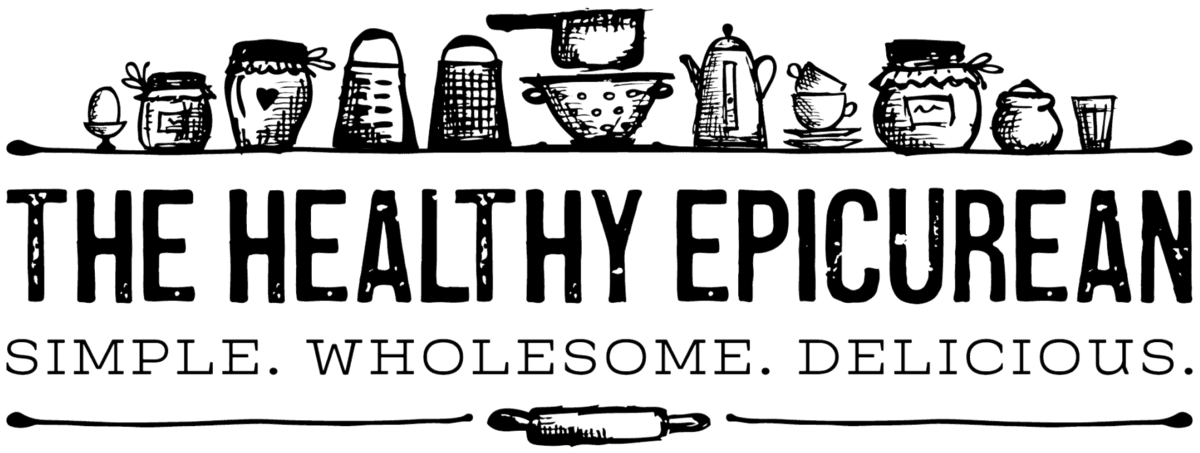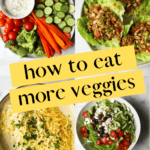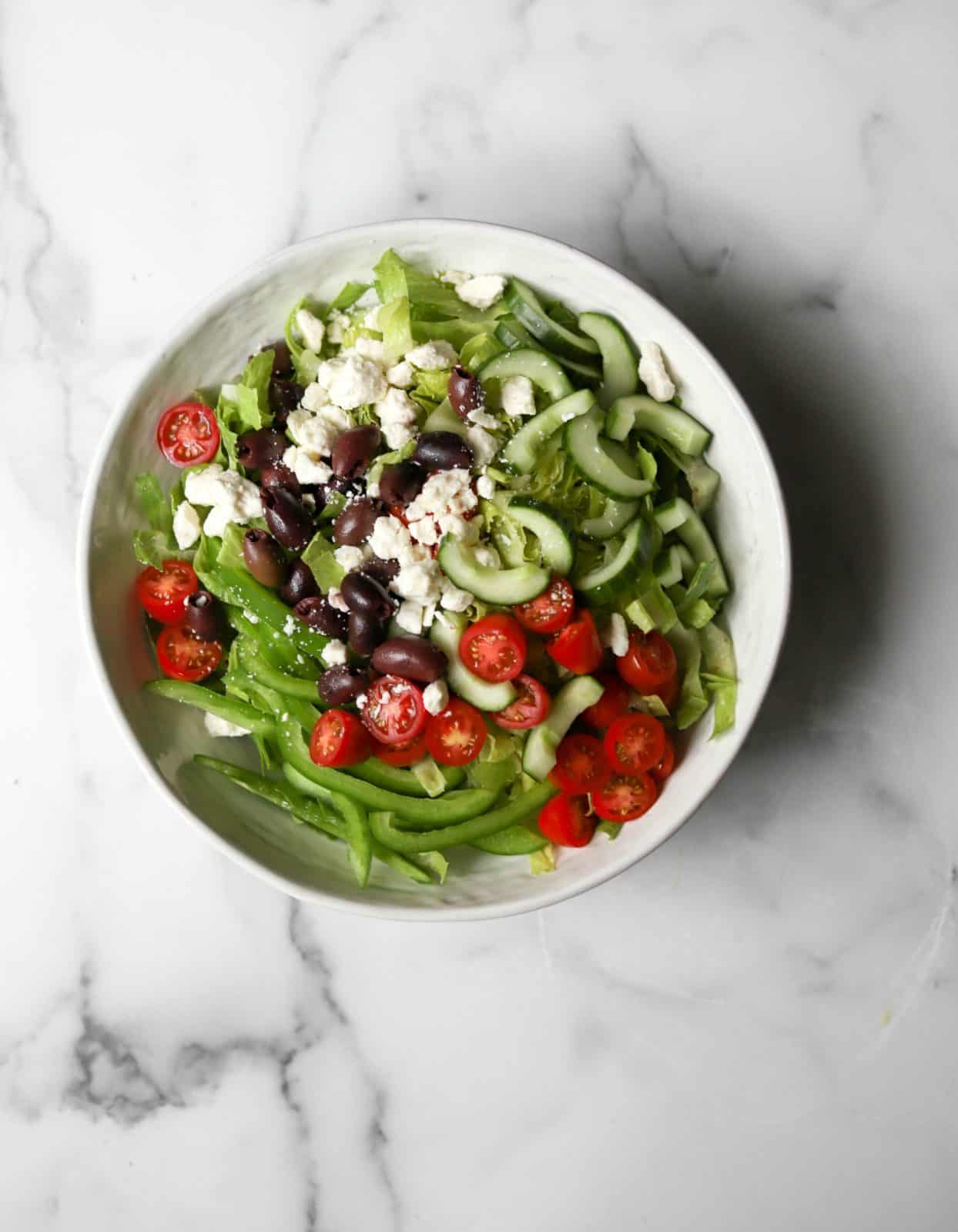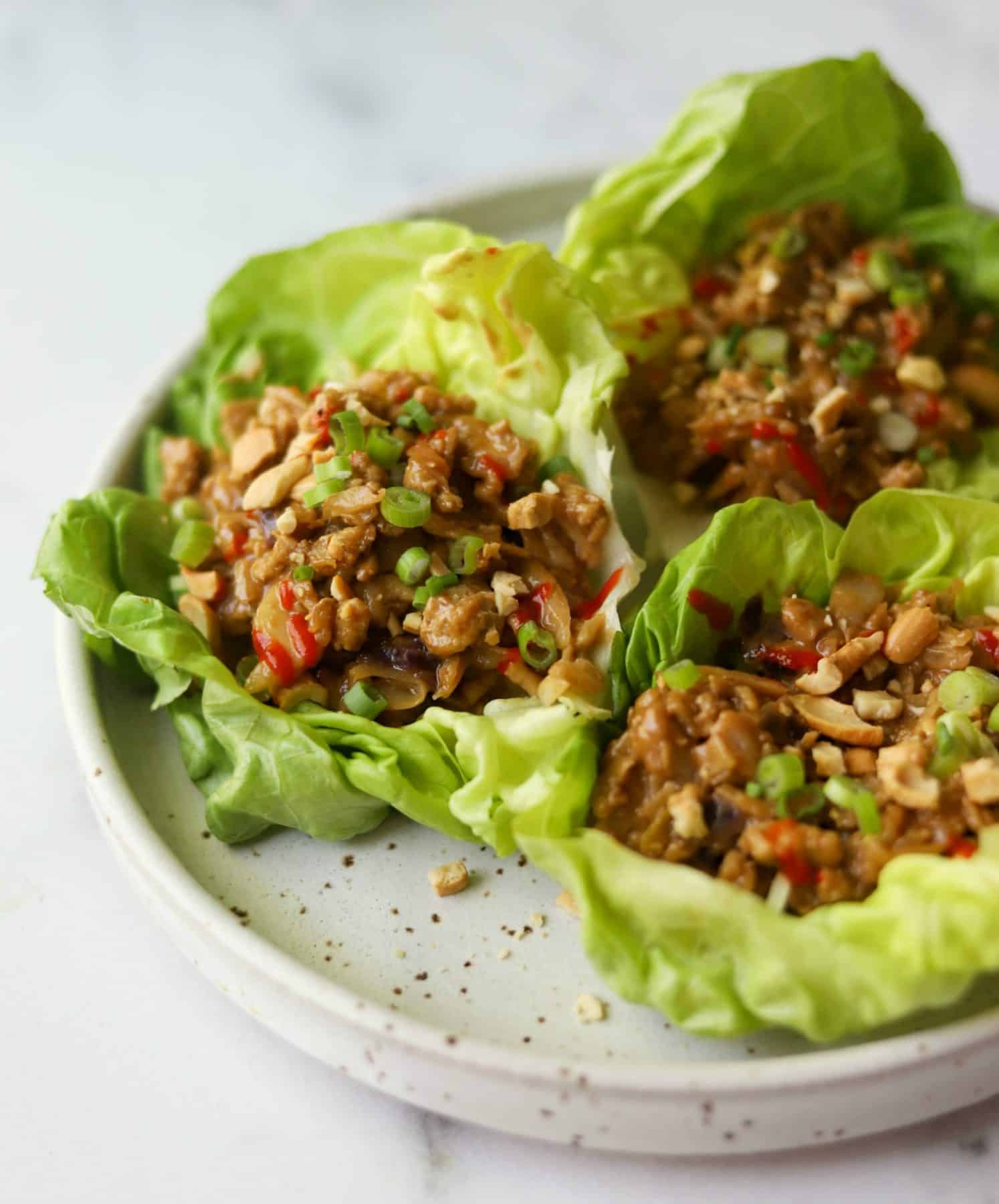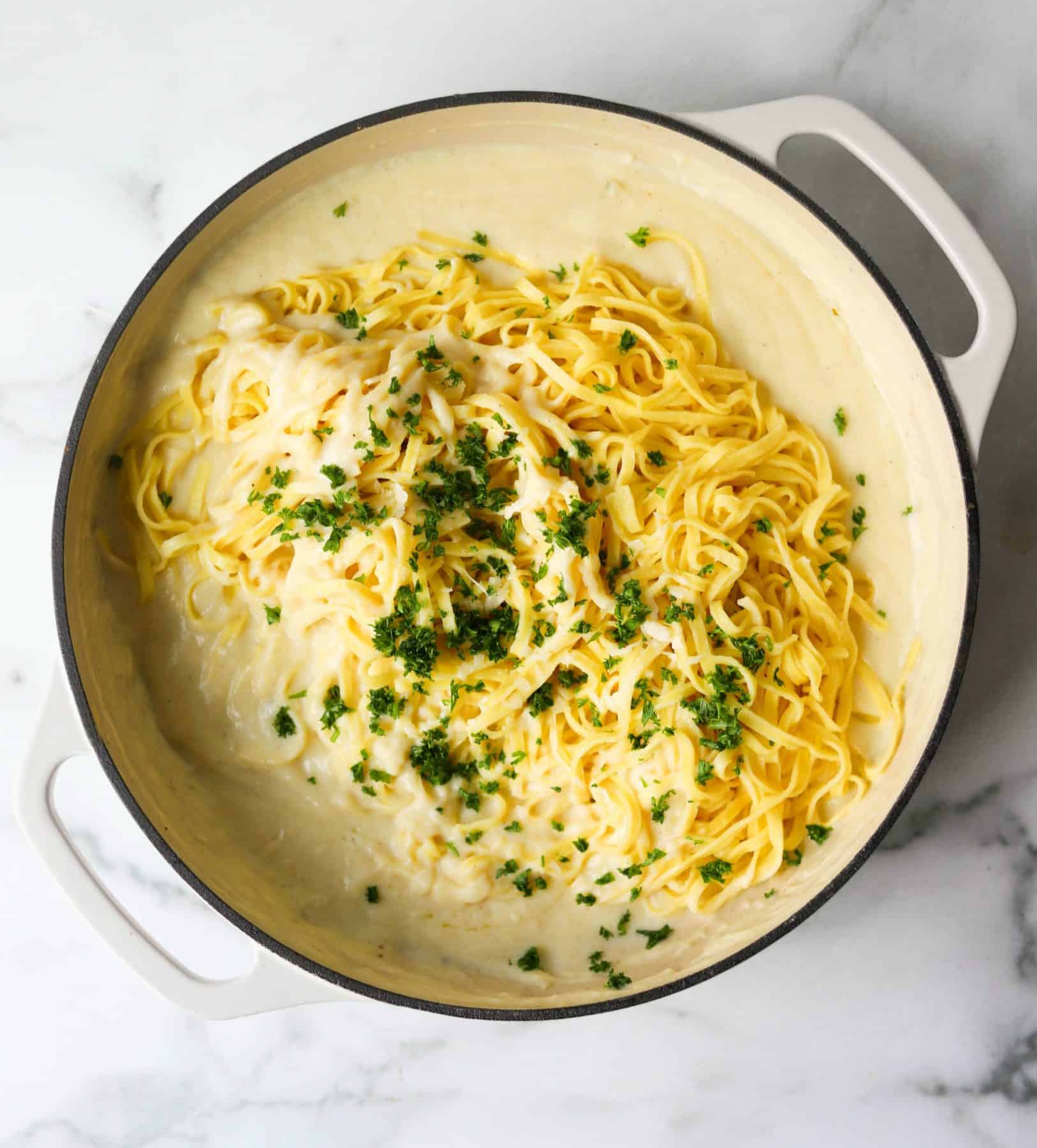Recipes with Lots of Vegetables
You’re likely aware that veggies are filled with nutrients like vitamins, minerals and dietary fiber, so they’re super important to eat on a regular basis.
But, sometimes it’s just difficult to get enough veggies in. That’s why I’m here with a round-up of recipes that contain lots of vegetables.
Whether you’ve run out of ideas, aren’t sure how to cook them or just want to up your veggie game, I’ve got you covered with over 50 recipes with loads of vegetables!
How to Eat More Vegetables
Tip #1: Focus on veggie-centered snacks
- One of the easiest ways to add more vegetables into your day is to center your snacks and appetizers around them.
- If you normally go for crackers or pita chips for hummus, consider also adding in raw carrots, cucumbers, or sliced bell peppers.
- Pair veggies with any dip — whether that’s a bean dip, spinach and artichoke dip or other favorite.
- If nut butters are your jam, combine them with your favorite veggies for a great snack, such as an apple or banana with peanut butter.
- Pro Tip: Keep raw veggies easily accessible and in plain view. If they’re front and center when you open up the fridge and even sliced ahead of time, you’re more likely to grab them.
Tip #2: Drink your vegetables
- When you think of drinking veggies, you may think green smoothies or juice.
- While these are a great way to add in veggies, they don’t always need to be green. All colors and have nourishing properties (eat the rainbow)!
- Add a handful of spinach or frozen cauliflower to a smoothie. Both make a mild addition that won’t overpower the taste. Carrots can also be a delicious add-in.
- If you have a juicer, it can be a super easy way to make veggie-based drinks too.
- However, make sure you still eat some of your veggies since some or most of the fiber is lost in the juicing process.
- If you are a smoothie king or queen, throw in a handful of kale or spinach.
Tip #3: Add veggies to breakfast
- If you prefer to eat your breakfast, there are plenty of options.
- Greens, onions and peppers can be easily added to most egg-based breakfasts.
- Love omelettes? Load them up!
- Or level-up a basic breakfast sandwich with a few simple veggie additions like tomatoes, spinach, mushrooms or peppers.
- If you’re looking for something a little different, you may enjoy Breakfast Brussels Sprouts or Breakfast Tabbouleh.
- For a make-ahead breakfast option for quick mornings, you can cook these Broccoli Cheese Egg Muffins or Chorizo Hash Brown Muffins, which are loaded with bell peppers.
Tip #4: Meal prep for the week
- One of the main barriers to eating more vegetables for many people is preparation time.
- To avoid this, set aside some time on the weekend to do a little meal prep.
- This can be as simple as cutting up veggies so they’re ready to go for snacks and meals for the week.
- If you need grab and go snacks, you can also portion them out into containers or bags. Taking just 5 minutes to prep a few veggies can be a HUGE time saver!
Tip #5: Capitalize on salads
- This may be the most obvious way yet, but salads are such an easy way to eat more vegetables.
- Whether you have a simple side salad with your lunch or dinner, or make a big salad meal, the options are endless.
- Plus, you can customize them to your taste preferences all the way down to the dressing and really make them your own.
Greek Salad with Feta Vinaigrette
Tip #6: Load more veggies into soups
- While many already include some veggies, you can always add more into the mix.
- This can be almost any vegetable depending on the soup — spinach, tomatoes, carrots, kale, peas, peppers, and many more.
- Frozen and canned vegetables work really well in soups, too, and are easy to have on hand.
- A summertime veggie favorite is minestrone soup, while for winter, a roasted root vegetable soup makes for a healthy comforting meal.
Also, check out my soups ecookbook for 27 amazing soup recipes!
Tip #7: Use vegetables as wraps and buns
- Leafy greens like lettuce and collard greens work well in place of wraps and buns.
- Lettuce wraps are super versatile and can be filled with a variety of mixtures like cashew chicken, taco filling, firecracker shrimp, or cauliflower-walnut filling.
- If you’re a fan of burger patties (vegetarian or meat-based) or sandwich wraps, collard greens make the perfect option to provide a bit more stability and are easier to fold. Just love traditional sandwiches with bread?
- Make a veggie-packed sandwich!
Cashew Chicken Lettuce Wraps
Tip #8: Roast into chips or fries
- One favorite and easy way to cook vegetables is to roast them.
- Almost any veggie tastes better when it’s in the form of a chip or fry.
- The most common ones are sweet potatoes (as chips, fries, or wedges), kale chips, carrot fries and regular baked potato fries.
- Other ideas include beets, parsnips, turnips, jicama, butternut squash and plantains. Flavor them with spices and herbs or pair with your favorite dipping sauce!
Tip #9: Elevate pasta and sauces with vegetables
- Some pasta dishes naturally include vegetables, while others just present a blank canvas for them to be added.
- You have two main options – add them into your pasta sauce (think pesto, creamy sauce, tomato-based sauce or butternut squash sauce) or cook them into the pasta separate from the sauce.
- Spinach, kale, tomatoes and broccoli make simple additions. This Italian Sausage, Bell Pepper & Spinach Pasta is a great example of adding veggies and protein to a pasta to make a delicious healthy meal.
Cauliflower Alfredo Sauce
Tip #10: Bake veggies into desserts
- Last but not least, you can’t forget about the tasty desserts and quick breads made with veggies.
- Think of these as just bonus opportunity rather than a main way to eat more vegetables. Zucchini bread is a classic summer example of this.
- In the fall and winter, sweet potatoes are the star of the veggie dessert show.
Tip #11: Fresh, frozen or canned vegetables?
- While it’s generally great to eat in-season produce when possible, don’t be afraid to utilize the help of frozen and canned vegetables, too.
- These are great to stock up on for whenever you run out of fresh produce, need something quick, or just prefer the convenience.
- If you’re finding that your veggies are going bad before you’re able to use them or you don’t go to the grocery store often, canned and frozen vegetables are also a great way to reduce food waste and save money.
- Now that you have 10 different ideas to eat more vegetables throughout your day, which ones will you choose?
